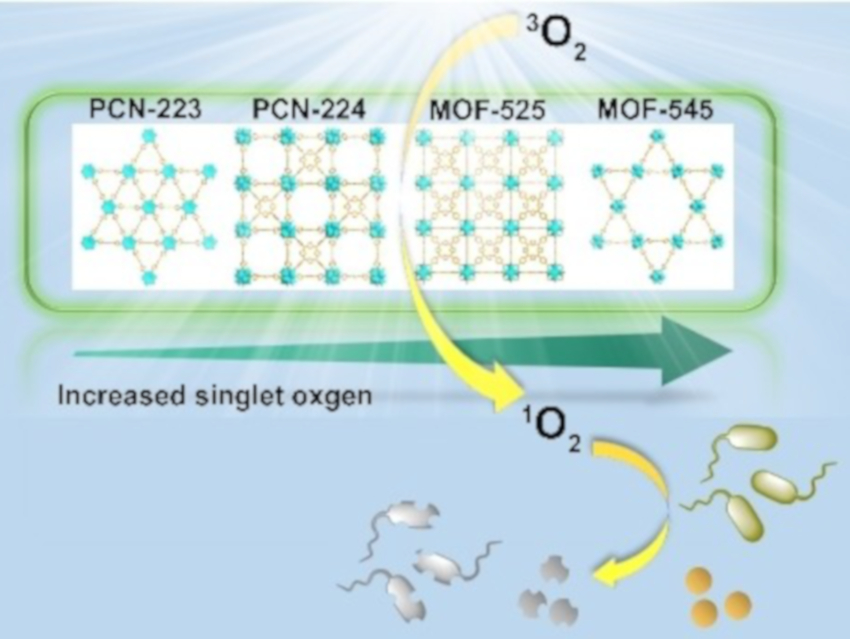Photodynamic sterilization uses light of a specific wavelength, oxygen, and a photosensitizer to generate reactive oxygen species such as singlet oxygen (1O2), which damages microorganisms. A photosensitizer with excellent photosensitivity is important for this process. Porphyrinic metal-organic frameworks (MOFs) are promising photosensitizers. These frameworks avoid the self-aggregation of porphyrins that usually occurs in aqueous solution. However, it is unclear how the topology of porphyrinic MOFs affects the generation of singlet oxygen.
Li-Jian Chen, Xiu-Ping Yan, Jiangnan University, Wuxi, China, and colleagues have studied four known porphyrinic zirconium MOFs, i.e. MOF-525, MOF-545, PCN-223, and PCN-224 (pictured below), which have different topologies (ftw, csq, shp and she, respectively). These MOFs are composed of Zr6O8 clusters connected by different numbers of meso-tetra(4-carboxyphenyl)porphyrin (TCPP) units. The team investigated the influence of the MOFs’ topologies on 1O2 generation and photodynamic antibacterial performance.

The ability of the MOFs the generate 1O2 was evaluated by measuring the absorbance of anthracene-9,10-diyl-bis(methylene) dimalonic acid. This compound can be oxidized by the generated 1O2, resulting in a decrease in absorbance. The antibacterial ability of the four MOFs was investigated by comparing morphological and viability changes in E. coli and S. aureus bacteria after incubation with the MOFs.
The team found that the 1O2 generation and the photodynamic antibacterial performance decreased in the order MOF-545 > MOF-525 > PCN-224 > PCN-223. The researchers found that the number of porphyrin units per Zr6O8 cluster, the pore size, and the distance between inter-porphyrin active sites play important roles in 1O2 production. This work could provide guidance for designing new MOFs for efficient photodynamic sterilization and therapy.
- Effect of Topology on Photodynamic Sterilization of Porphyrinic Metal-Organic Frameworks,
Yao-Yao Liu, Li-Jian Chen, Xu Zhao, Xiu-Ping Yan,
Chem. Eur. J. 2021.
https://doi.org/10.1002/chem.202100920


